As one of the most significant players in additive manufacturing (AM), GE Additive is always a company to watch at industry trade shows. At this year’s Formnext, the firm unveiled both an important new software platform, as well as a new contract with the Department of Defense.
Simulation is all the rage in metal 3D printing—and for good reason: it is becoming crucial for ensuring that parts are printed properly the first time, or at least early in the design and production process. After all, metal 3D printing is a notoriously finicky process, with parameters difficult to pin down for every material and part, resulting in wasted material, machine time, and even equipment damage.
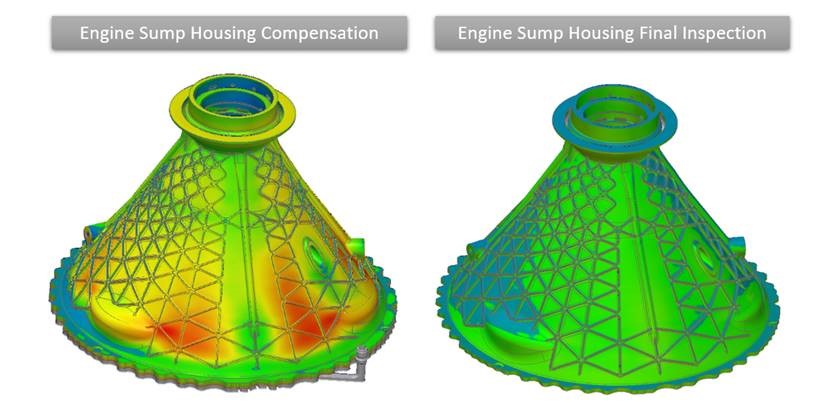
Using simulation-based compensation software reduced deformation by about 60 percent on the GE Catalyst sump housing.
(Photo: GE Additive)
It’s no surprise then that GE Additive has debuted its cloud-based, process management software platform, Amp. The tool includes two modules to start, Print Model and Simulation & Compensation. Amp’s Print Model is a print preparation tool that automates manual tasks based on best practices, including part orientation, support generation, nesting, labeling, slicing and scan path generation. Simulation & Compensation is designed to be a simple tool that can predict distortions, residual stresses, recoater interference and defects and then correct for those issues before printing.
GE claims that its Simulation & Compensation tool avoids the typical trial-and-error approach seen in metal 3D printing, without becoming overly sophisticated like other simulation tools on the market. Generally, simulation software requires both specialized expertise and powerful computing. Because GE’s software is cloud-based, the computing burden is placed on GE’s servers. Purportedly, no advanced degree is required to operate the software either.
“Our vision is simple. We want to make it as easy as possible for our customers to develop and 3D print parts quickly and efficiently. That way they can get to production and industrialization faster. Amp is the fourth pillar in GE Additive’s full solution along with machines, materials and services,” said Igal Kaptsan, general manager of software at GE Additive. “At GE we are in an enviable position of being both the largest user of metal additive technology, as well as being a manufacturer of machines and powders, so we understand first-hand the challenges other users face when industrializing metal additive. And, when we couldn’t find a software solution that met our needs and was easy to use, we created one. As we developed Amp my team has benefited from close collaboration with teams at GE Aviation and at GE Global Research – actual additive users working on an industrial scale – to get their perspective and invaluable feedback.”
The tools are based on the expertise of GE Additive, GE Aviation and GE Global Research, with knowledge from real-world applications integrated into Amp. The platform relies on a single database to make it easy to move data between tasks. It also provides recipes with predetermined parameters to more quickly enable printing, as well.
Concept Laser M2 customers can now sign up for a free, six-month trial of Amp, while a wider release is planned for second quarter of 2022. Speaking to this point, Jeremy Harrington, vice president of business development, software at GE Additive, noted, “We know from our work on binder jet and M Line that this iterative, customer-centric approach works really well and helps us continuously improve Amp as we prepare for wider release in Q2 next year.”
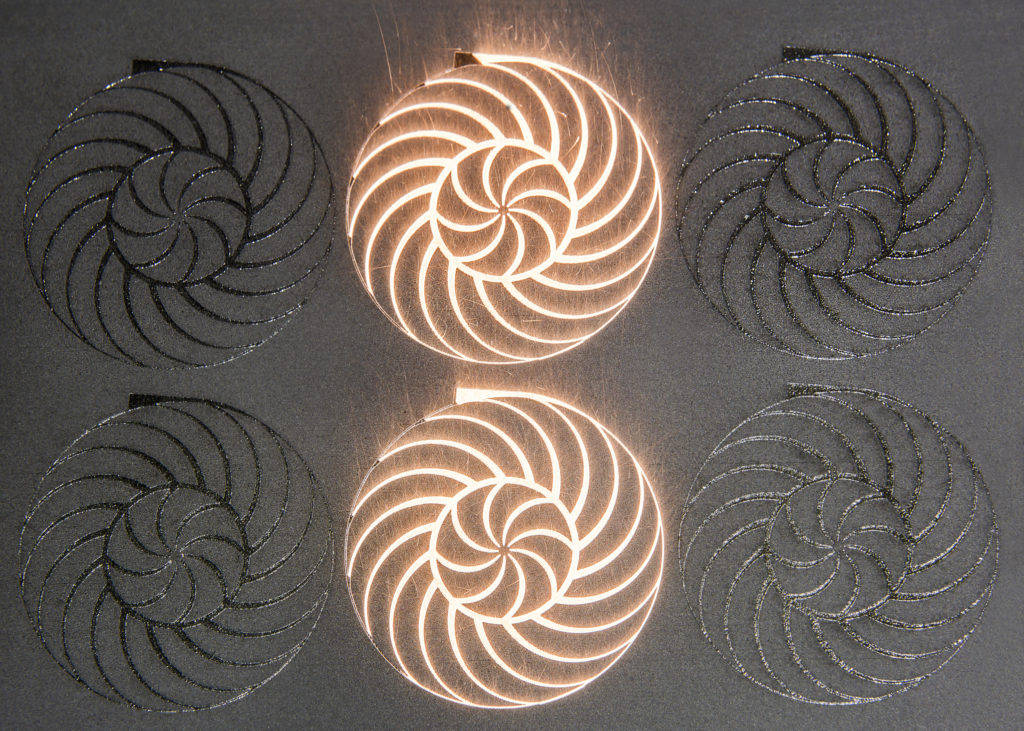
GE Additive and Wichita State’s National Institute for Aviation Research team up to accelerate metal additive technology for rapid Department of Defense implementation. Image courtesy of GE.
In addition to the new software, GE announced a non-binding Memorandum of Understanding with Wichita State University’s National Institute for Aviation Research (NIAR) to help the Department of Defense (DoD) speed up its adoption of metal 3D printing. To do so, the two will advocate for “common practices, rapid qualification and certification, and the development of a shared database for additive manufacturing data and knowledge.”
The two parties share experience in digital twins, with GE 3D printing spare parts from digital twin data and NIAR creating digital twins of vehicles. They will also be able to blend their respective knowledge in aerospace, manufacturing, materials qualification and more. Student employees from Wichita will be involved, as well, as the duo develops a platform that could potentially be used across all branches of the DoD.
“Based on our experience with NIAR’s material qualification capabilities and how they complement our work at GE Additive, we realized the benefits of putting our relationship with NIAR on a more formal footing,” said David Handler, general manager – government business at GE Additive. “We visited the team at Wichita to see their facilities firsthand, and that accelerated our discussions to determine how we can bring our complimentary abilities to bare for the warfighter.”
“NIAR’s material database capabilities are an important asset needed to build a comprehensive, secure, accessible, standard format for materials data that all depots can use,” said Handler. “The partnership will accelerate the DoD’s desire to go from old metal to digital and then supply needed spare parts by going from digital back to new metal.”
While GE has been advancing 3D printing on the military front, it is also putting its technology to more benevolent use in the world of animal healthcare. In time for Formnext, the company provided a case study in which its metal AM was used to aid in the repair of neck fractures in racehorses.
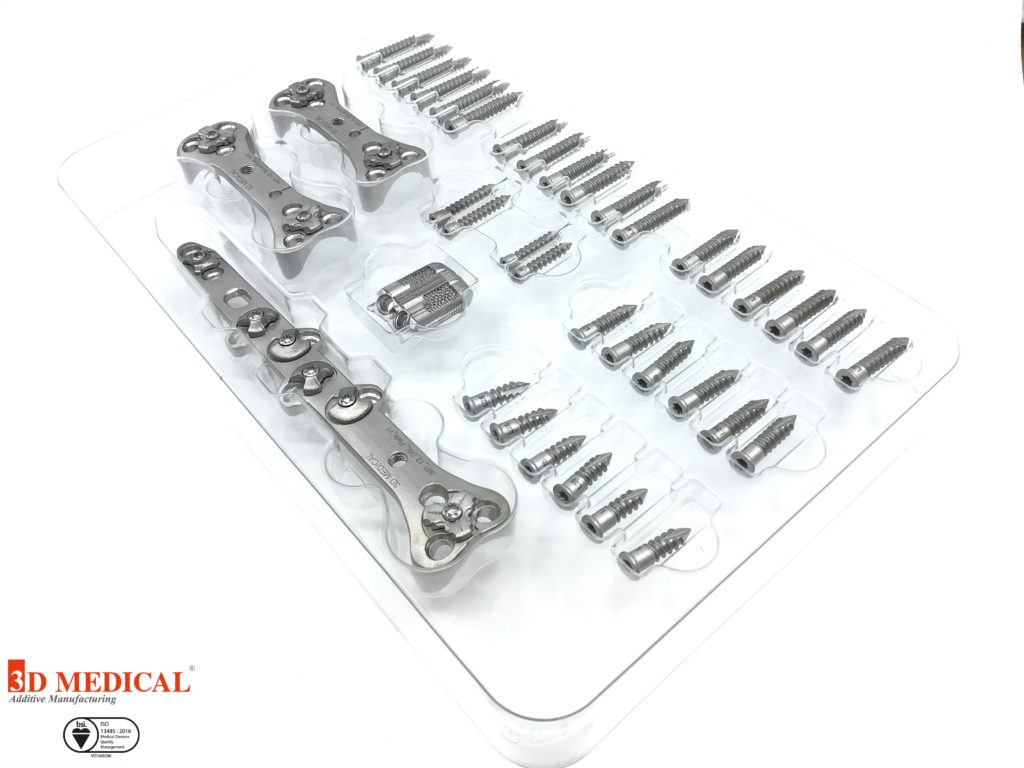
Manufactured by 3D Medical on its fleet of GE Additive’s Mlab printers, the 3D printed titanium implants (plates, screws and cages) have a spongy, mesh rib-like shape to allow the bone and ligament tissues to adhere well to the prosthesis. (Photo: 3D Medical)
The ghastly practice of horse racing often sees these impressive creatures sustain brutal, often fatal injuries. As recently as 10 years ago, horses with neck fractures were routinely euthanized due to the inability to treat the animal. Addressing this issue has seen some advancement, but the proper surgery is still rarely performed due to the low likelihood of success.
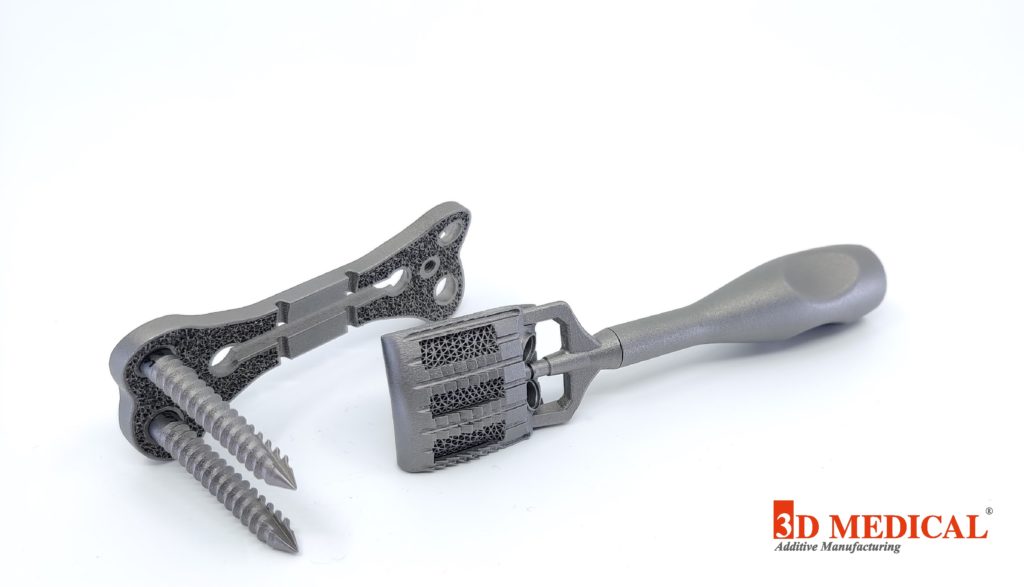
3D printed neck implants manufactured by 3D Medical in titantium alloy on GE Additive Mlab machines. (Photo: 3D Medical.)
To overcome the problem, equine veterinary surgeon Dr. Fabrice Rossignol, at Clinique de Grosbois outside Paris, has begun relying on metal 3D printing. Working with one of France’s more notable additive bureaus, 3D Medical, the clinic helped to develop a method for treating fractured horse vertebrae.
The process involves stabilizing the vertebrae with a 3D printed plate, 3D printed cancellous screws and, if necessary, a small 3D printed titanium cage that may be attached to the ventral disc space. A 3D printed titanium space may be placed between vertebrae in order to preserve the proper spacing and prevent a slipped disc during surgery, while the use of metal AM makes it possible to increase osseointegration through porous designs. 3D Medical is now selling these 3D printed parts in Switzerland, the U.S. and Australia, though its main focus is on human patients.
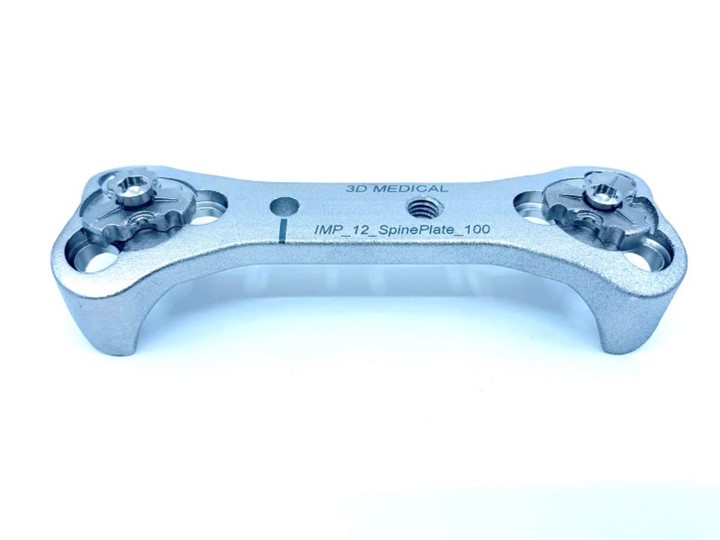
3D-printed neck implants manufactured by 3D Medical in titanium alloy on GE Additive Mlab machines. (Photo: 3D Medical.)
“The three major features and benefits of the metal 3D implant are its precision of custom printing and its resistance to a force and weight (a horse’s weight is significantly greater than a human’s), as well as the post-operative mobility of the animal,” said Rossignol.
3D printing clearly shines in this example due to the specialized nature of the application. For the owners of these racehorses, there is the possibility of reducing downtime during recovery, but for the animals themselves, this could mean the difference between life and death.
Subscribe to Our Email Newsletter
Stay up-to-date on all the latest news from the 3D printing industry and receive information and offers from third party vendors.
You May Also Like
DyeMansion Debuts Polymer Post-Processing Solutions at Formnext 2024
DyeMansion is shaking up post-processing workflows with three new solutions unveiled at Formnext 2024. Under the motto It Just WorX, the company introduced the Powershot X for blasting and surfacing,...
Nano Dimension Expands Micro-Manufacturing with Exa 250vx 3D Printer
As it continues to push for the acquisitions of Desktop Metal and Markforged, Nano Dimension has introduced a new micro-3D printing system at Formnext. Adding to the Fabrica Tera and...
3D Systems Pushes New Tech and Partnerships at Formnext
As one of the pioneering companies in additive manufacturing (AM), 3D Systems remains a key player to watch at Formnext 2024, where it is showcasing major partnerships, innovative technologies, and...
Formnext Day Three: Rock & Zoll
The biggest news on day three was, of course, the reactions to the band at the exhibitor’s party. The soirée was well attended, with the crowd rocking on until early...



































